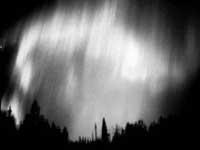Black auroras

The European Space Agency's Cluster mission aims to study the Earth's magnetic field and has conducted one of its latest aurora research. Specifically, it has analyzed the black auroras, lagoons that are sometimes observed in the auroras. Auroras occur when particles emitted by the Sun penetrate the upper layers of the atmosphere.
The flow of electrons is generated from space to Earth and we see the auroras. However, in the hollows, in the ‘black’ auroras, exactly the opposite phenomenon occurs, that is, the flow of electrons from Earth to space and, somehow, the aurora is annulled. The cluster mission has analyzed this phenomenon for the first time and has been able to see how it occurs, how long it lasts and how it changes with altitude.





